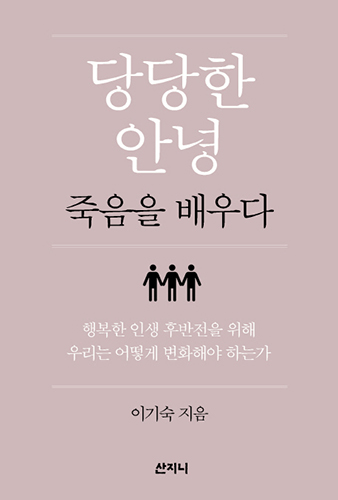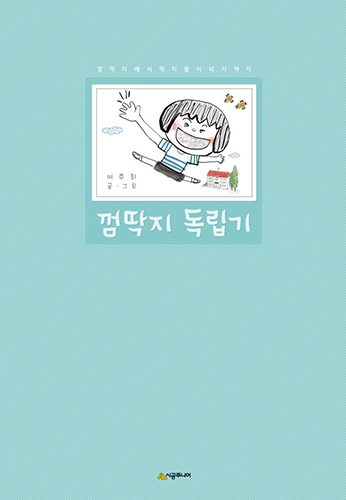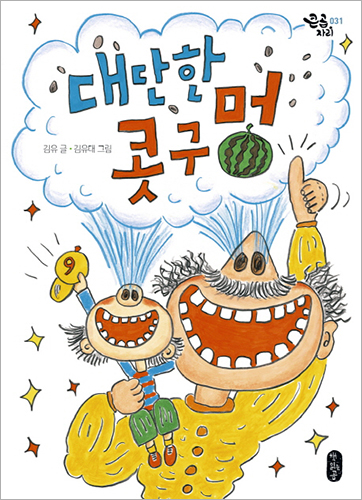|
Export Prospects of Korean Books KPIPA’s Choice for Supporting Abstract · Sample Translation
2018.01
Farewell
1. Publication Details Imprint | SANZINI Title | Farewell Subtitle | Learning about Death Author | Ki-Sook Lee Format | 188*257 Binding | Paperback Pages | 262pages ISBN | 978-89-65454-37-3
2. Contact Name | Haneulbada Park Phone | +82-51-504-7070 Email | ehreh1111@daum.net URL | http://www.sanzinibook.com
3. Marketing Information Issued Copies / Bestselling Ranking | 1,000 copies Topic | Life and death Target Readership | General public Media Review and Advertisement | The study of death deals not with death but with life. – Psychologist Robert Kastenbaum
4. About the Author Lee was born in Busan in 1950. She retired from her position as professor of family and elderly welfare at Silla University, and is currently the president of Dying Matters, Korea.
5. About the Book Essay on Life’s Last Task: Well-Dying.
Three Minutes a Day of World History 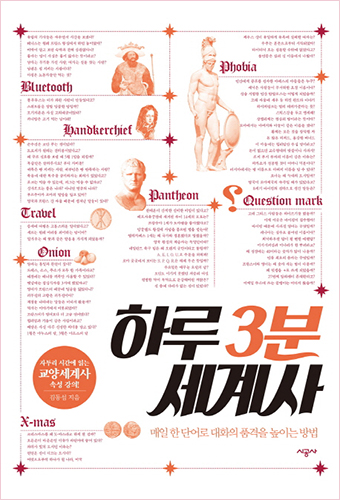
1. Publication Details Imprint | Sigongsa Co., Ltd Title | Three Minutes a Day of World History Author | Dong-sub Kim Format | 155*224 Binding |Paperback Pages | 284pages ISBN | 978-89-52779-20-5
2. Contact Name | Sunju Jung Phone | +82-2-2046-2895 Email | alliswell1224@sigongsa.com URL | http://www.sigongsa.com
3. Marketing Information Theme of Book| World history presented through 100 words Media review and advertisement copy | Three minutes of your day can change the quality of your conversations! Words that will get you naturally conversing about world history
4. About the Author
Kim has studied French at Sungkyunkwan University. After devoting himself to studies of everything French, he received his master’s degree at the Limoge University, and doctoral on linguistics from the Université Paris 5 (Paris Descartes) Kim is currently teaching at the French department at SuwonUniversity, and lectures on subjects such as French literature, cultural anthropology, mythology, and Latin.
5. About the Book
If TV programs and the weather are the only topics for your daily conversation, if you find yourself panicking in moments of silence as you frantically search for things to talk about, if you would like your conversations to have a touch of class, maybe what you need is deeper knowledge about world history.
Clingy Learns to Stand Alone and Other Stories
1. Publication Details Imprint | SigongJunior Title | Clingy Learns to Stand Alone and Other Stories Author | Yi Ju-hui Format | 205*175 Binding | Paperback Pages | 36pages ISBN | 978-89-527-8621-0
2. Contact Name | Irene Lee Phone | +82-2-2046-2849 Email | Irene@sigongsa.com URL | http://www.sigongjunior.com
3. About the Book ▣ The Plot of "Clingy Learns to Stand Alone" Yunwu, who is seven going on eight, is a clingy child, stuck to his mother like a piece of gum, refusing to let go. When his baby brother Hyowu is born, he learns that there are more and more things that he has to do on his own. He enters elementary school and meets a new friend, Parang, and the two hit it off. As the two fight and make up, their relationship becomes tighter. In May, the month of the family in South Korea, Yunwu goes to the ballpark with his family. On his birthday in June, Yunwu wonders, "When did I grow so big?" During summer vacation, he goes to his grandfather's house and watches the corn grow, and he also takes a trip to the beach. In the fall, school resumes, and Yunwu struggles after catching a cold in the crisp weather. As the end of the year approaches, Yunwu organizes old stuff with his mom. He recalls the memories with each object and misses those moments. Yunwu moves in December and is sad to leave his friend, Parang. Everything about his new neighborhood is unfamiliar, but Yunwu is also excited. He greets the new year in the new neighborhood and is full of questions about his new school and new friends.
▣ The Plot of "Jungle Bus" Minwu's father is a bus driver. One day when his dad takes a shower after getting off work, Minwu puts on his father's uniform and drives the bus. Minwu ends up driving into a jungle and he picks up an orangutan, an alligator, and a boa constrictor that he meets there. However, he ends up driving the bus into a swamp. He screams for help, and safely escapes thanks to a bridge that the alligators create. The boa constrictor swallows the sinking bus just in the nick of time and brings it out of the swamp. While they wait for the wet bus to dry, Minwu roasts bananas with his animal passengers, climbs trees, rides a boat and plays on the slides. When the bus is all dry, Minwu gets on. The animal friends whistle and call the flamingos, and they carry the bus to Minwu's house. Minwu arrives safely, takes off the uniform like nothing happened, and enjoys a delicious dinner with his mom and dad.
▣ The Plot of "The 100-Year-Old Cat, Yomu" Yeongji is a girl who lives alone with her old grandmother after her mom went to heaven when she was a baby. (She has no memory of her father.) Yeongji's grandmother bellows in a thunderous voice each time a stray cat approaches, but she is a warm-hearted person who always adds a handful of rice for the cat when she cooks. When Dongcheol’s dog gives birth to puppies, Yeongji begs her grandmother for one but is unable to break her grandmother's bullish stubbornness. Yeongji brings the stray cat that comes to her house to eat when playing house with her friends and their puppies. On the spot, she names the cat Yomu. One day, when her grandmother is sick in bed, the stray cat, Yomu, comes into the house, and Yeongji believes that Yomu is there to visit her sick grandmother. From that time, Yomu enters the house even after Yeongji’s grandmother gets well, and they live together as one family. A few days later, Yomu gives birth to kittens, and Yeongji's grandmother prepares a feast for Yomu. Yeongji's friends beg her for a kitten and Yeongji is happy thanks to Yomu.
▣ The Plot of "Delicious Is Delicious" Six-year-old Solwu lives with her grandmother, mother, father, seven-year-old older brother, and two-year-old brother. One day, her younger brother swallows a button and is rushed to the hospital. Seeing that, Solwu wonders, "Does Yeonwu think buttons are delicious?" and she begins thinking of tasty things. She thinks of the food that the entire family—her cat, the plants, Mom, Dad, Grandma—think is delicious as well as the food that she finds tasty, letting her imagination run from one dish to another. The writer shows the readers delicious food, delicious spaces, delicious times, delicious smells and delicious sounds through the perspective and thoughts of the young Solwu. The reader then discovers that "our house," with all its delicious food, time, smell, and sound, is the most delicious.
▣ The Plot of "Night Sailing" Every night, the child prepares to sail as he goes to sleep. The child, who goes out to faraway waters using his bed as his boat, heads toward a treasure island with his friends. On their way, they meet the rain and a storm, but the child firmly overcomes all these challenges. When he meets a scary sea monster, he puts it to sleep by singing him the lullaby that his mother sang to the child when putting him to sleep. The child arrives at a treasure island full of his own cute toys and dolls and then returns home in search of more treasure and falls asleep.
Bullheaded Yi Sun-sin 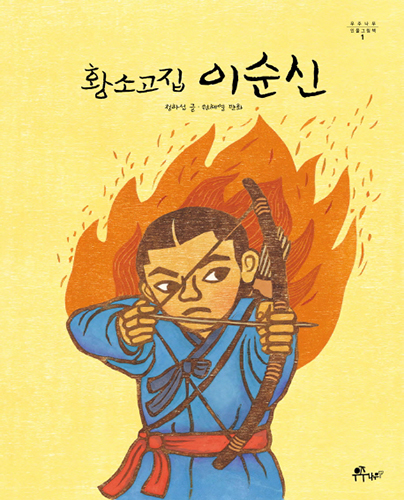
1. Publication Details Imprint | Woojunamu Title | Bullheaded Yi Sun-sin Author | Jung Ha-sup Illustrator | Won Hei-young Format | 220*270 Binding | Hardcover Pages | 40pages ISBN | 979-11-95752-11-9
2. Contact Name | Jung Ha-sup Phone | +82-70-8848-1905 Email | woojunamup@naver.com URL | http://woojunamup.blog.me
3. Marketing Information Awards, Recommendations, and Selections | Recommended by Kyobo Bookstore, Aladin, Yes24 MD Subject| A coming-of-age story about a stubborn boy Target Readers| Children ages 4 to 8 Media Reviews & Advertisement Copy | How did a stubborn-as-a-mule Yi Sun-sin become a national hero?
4. About the Author / Illustrator
Jung Ha-sup graduated from Sunkyunkwan University and worked as an editor at a publishing company before becoming a writer. He has written over 40 children’s books, and three of his works have been published in elementary school textbooks. Several of his books have been translated into French, German, Swiss, Japanese, and Chinese.
5. About the Book This is a picture book to encourage a life with a purpose. Yi Sun-sin is a national hero to Korean people. As a naval general he defeated the Japanese during the Imjin War and defended his country and people. However, this book doesn’t focus on his heroic achievements. Rather, the book shows how Yi Sun-sin came to develop his personality and strengths to find a purpose in life. The story centers on Yi Sun-sin’s adolescence and how he matures through trial and error. The woodcut illustrations impresses upon readers Yi Sun-sin’s stubborn character and outgoing personality.
Great Nostrils
1. Publication Details Imprint | Bearbook Title | Great Nostrils Author | Kim Yu Illustrator | Kim Yu-dae Format | 152*210 Binding | Paperback Pages | 104pages ISBN | 979-11-58360-46-7
2. Contact Name | Choi, Hyun K. Phone | +82-2-332-2672 Email | bear@bearbooks.co.kr URL | http://cafe.naver.com/bearbook
3. Marketing Information KEYWORDS | Dad and I, family
4. About the Author / Illustrator
Kim Yu was born the youngest daughter of the strongest, handsomest father in the world. She wrote this book in hope that every child may count on their father as a friend, even if they are not biologically related or the richest or most successful in the world. She is the winner of the 17th Changbi Good Children’s Book Award and has written such books as My Name is Gugu Sneakers, Manbo the Scaredy-Cat, The Dog that Ate Instant Noodles, The Mixed-Up Library, andThe Dontread Family and the Book Restaurant. She is the co-author of Forget Your Worries Mailbox and Forget Your Worries Library.
5. About the Book This book is dedicated to dads and kids all over the world. Sometimes Dad can be more of a baby than I am; maybe sometimes he doesn’t get what I feel; maybe we don’t even look like each other; but we’re still on the same side. With Dad by my side, I can do anything! A refreshing collection of stories showing not-so-perfect dads trying their best and their kids that love them anyway.
Chapter One: Great Nostrils
Chapter Two: The Three Musketeers
Chapter Three: The Best-Dad Search
Funerals of the World, Different in Every Culture 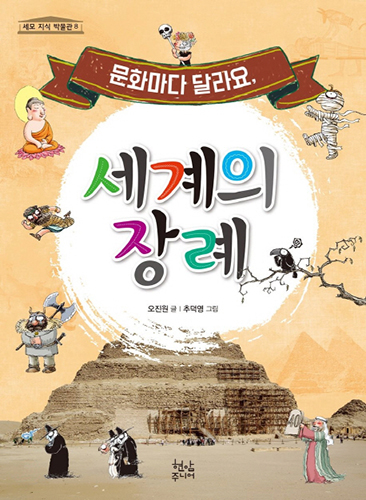
1. Publication Details Imprint | Hyeonamsa Title | Funerals of the World, Different in Every Culture Author | O Jinwon Illustrator | Chu Deokyeong Format | 188*257 Binding | Paperback Pages | 116pages ISBN | 978-89-323-7455-0
2. Contact Name |Jung-won Hwang Phone | +82-2-365-5051 Email | cat@hyeonamsa.com URL | http://www.hyeonamsa.com
3. About the Author / Illustrator
O Jinwon, the author, loves to read and write children’s books. He is a member of The Old Red Bean Porridge Lady, a gathering for sharing old tales, and Children’s Nonfiction Books Research Association. His works include I Came to Borrow a Book; Run, Little Courier; My True Transparent Friend; The Three-Generation Old Embers; and Bang Jeonghwan Dreams of a World for Children.
4. About the Book
Tombs are world heritage sites, you say? And funerals are festivals?
|
Pre Megazine
-

Export Prospects of Korean Books
VOL.1
2017.06 -

Current State of Korean Publishing
VOL.1
2017.06 -

Korean Bestsellers Trend in June
VOL.1
2017.06 -

Export Prospects of Korean Books
VOL.2
2017.07 -

South Korea's publishing industry
VOL.2
2017.07 -

South Korea's July Bestsellers
VOL.2
2017.07 -

Export Prospects of Korean Books
VOL.3
2017.08 -

South Korea's digital publishing industry
VOL.3
2017.08 -

South Korea's August Bestsellers
VOL.3
2017.08 -

Export Prospects of Korean Books
VOL.4
2017.09 -

Changes in South Korea's reading demographics
VOL.4
2017.09 -

South Korea's September Bestsellers
VOL.4
2017.09 -

Export Prospects of Korean Books
VOL.5
2017.10 -

South Korea's Printing Industry
VOL.5
2017.10 -

South Korea's October Bestsellers
VOL.5
2017.10 -

Export Prospects of Korean Books
VOL.6
2017.11 -

South Korea's Key Publishing Related Organizations
VOL.6
2017.11 -

South Korea's November Bestsellers
VOL.6
2017.11 -

Export Prospects of Korean Books
VOL.7
2017.12 -

South Korea's Major Online Bookstores
VOL.7
2017.12 -

South Korea's December Bestsellers
VOL.7
2017.12 -

Export Prospects of Korean Books
VOL.8
2018.01 -

South Korea's budding publishing experts
VOL.8
2018.01 -

South Korea's January Bestsellers
VOL.8
2018.01 -

Guadalajara Book Fair 2017 Book from Korea
VOL.8
2018.01 -

Export Prospects of Korean Books
VOL.9
2018.05 -

South Korean Government Policies to Shore Up the Publishing Industry
VOL.9
2018.05 -

South Korea's April Bestsellers
VOL.9
2018.05 -

Overseas Publication Grants
VOL.9
2018.05 -

Overseas Publication Grants
VOL.10
2018.06 -

Aggregate data as of the fifth week of May
VOL.10
2018.06 -

South Korea’s Digital Publishing Contents Platform
VOL.10
2018.06 -

Export Prospects of Korean Books
VOL.10
2018.06 -

South Korea's June Bestsellers
VOL.11
2018.07 -

Overseas Publication Grants
VOL.11
2018.07 -

South Korea’s Library Status
VOL.11
2018.07 -

Export Prospects of Korean Books
VOL.11
2018.07


